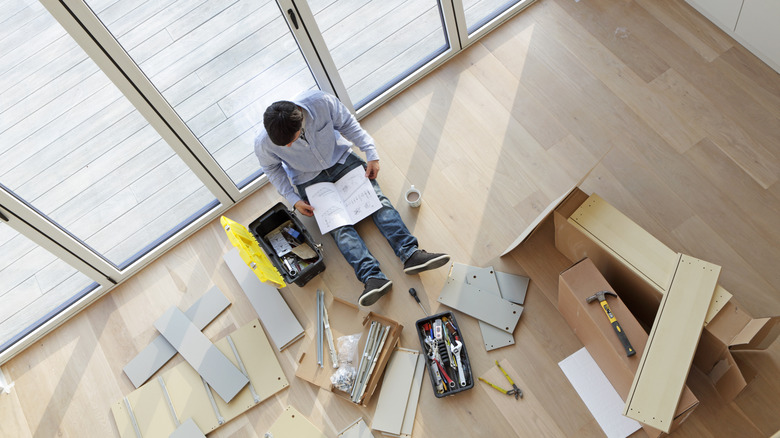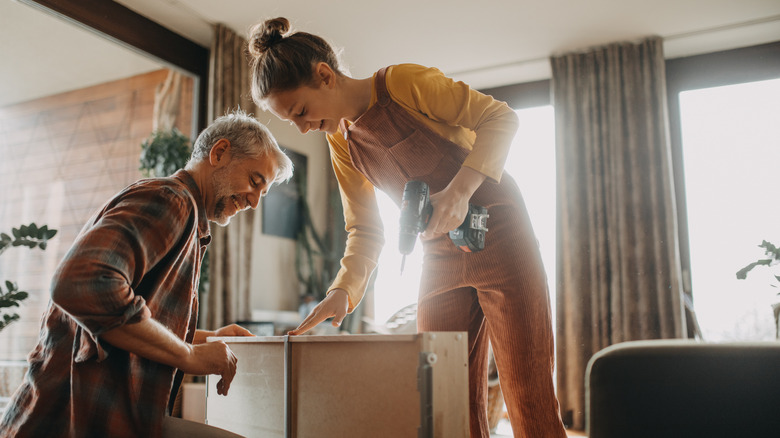The IKEA Effect Theory Will Change How You View Interior Design
IKEA furniture is found in homes all around the world, even though it can sometimes feel like you need an advanced degree in engineering to assemble it. But what if that frustrating process is actually the key to loving your space even more? While it may seem far-fetched that the reason IKEA makes you assemble your furniture is anything more than cutting production costs, there is a psychological component behind this approach. In fact, researchers at Harvard Business School have coined this theory as "the IKEA effect," which looks at how people are more likely to value products that are self-made.
If you consider this theory when looking at your own interior design, you may get a whole new perspective. By investing your time and effort into building something, it can become more than just a piece of furniture — you'll see it as something you truly value. This idea might just inspire you to get a bit more hands-on with your home, adding those personal touches that really make it feel like yours.
Breaking down the IKEA Effect
There are plenty of pros and cons of buying home decor from IKEA, but requiring buyers to assemble the product may surprisingly be something to add to the pros column, thanks to the IKEA Effect. When this theory was researched by Harvard Business School, it looked at how people tend to place a higher value on items that they assemble themselves, even when their creations don't turn out perfect. During this study, participants had to assemble IKEA furniture, fold origami, and even build something with Legos. When all was said and done, the participants who built the items themselves were willing to pay more for their products compared to those who were given identical, pre-assembled products. However, this was only the case when the task was actually completed.
The research on the IKEA Effect suggests that the effort put into building something can actually increase a person's attachment to it. So, while the assembly-required approach may be frustrating at times, if you're able to achieve a finished product, it may be worth it in the long run. Perhaps this is why so many people find homemade gifts and memorabilia so much more meaningful. No matter how you look at it, this insight can change how you view interior design, helping you to value the pieces you put effort into creating while also rethinking the purpose behind DIY-friendly decor.
How the IKEA Effect can help you design a space you truly love
The IKEA Effect is more than just an interesting theory, it gives us a practical approach that can transform how you view interior design. When you invest time and effort into assembling your furniture or decor (whether or not it's even from IKEA), you naturally become attached to those pieces. This attachment can help you to appreciate your space on a deeper level, giving it more character and making it feel more unique to you. Instead of just filling a room with ready-made items, embracing the DIY technique for home decor can help create an environment that reflects your personality and style.
If you're wondering where to start, look at the items professional interior designers actually buy at IKEA. Many designers select pieces that require self-assembly but also contribute a practical and stylistic appeal to any space. Maybe you've been considering if you should tackle a DIY creation for your home instead of taking the easy route — in which case, you may find that the DIY option will give you a more valuable result. The IKEA Effect teaches us that creating a home isn't just about the finished product, it's about the journey of building something that resonates with who you are.


